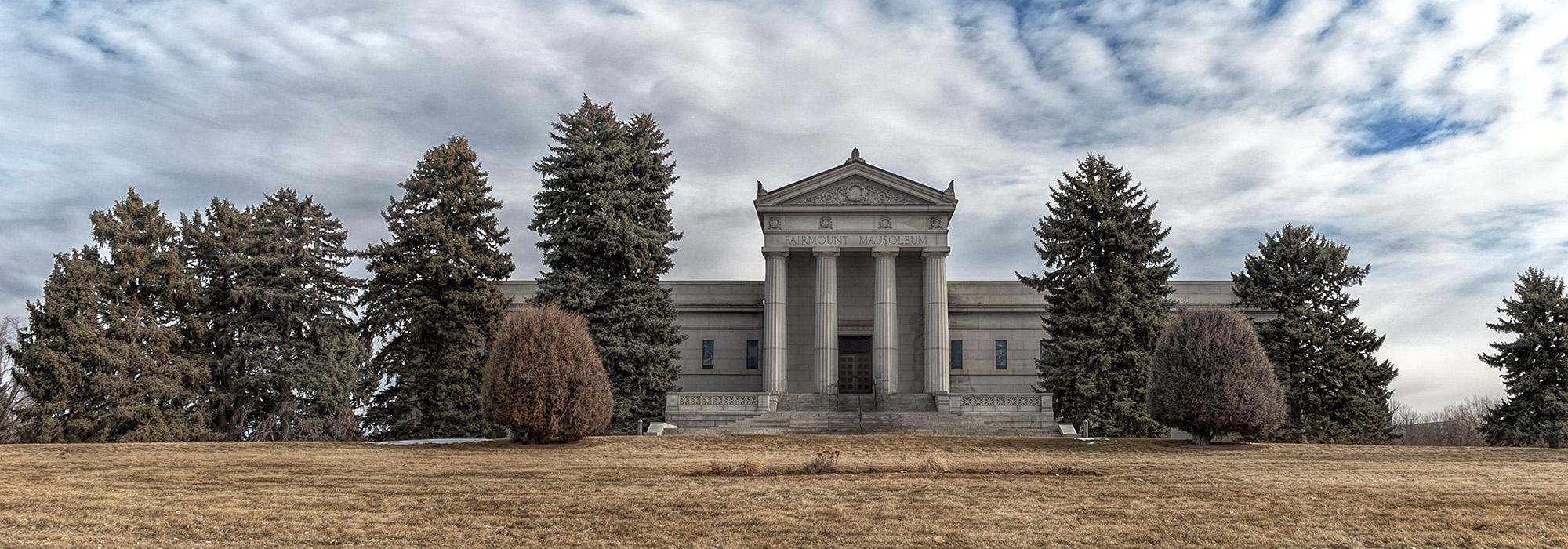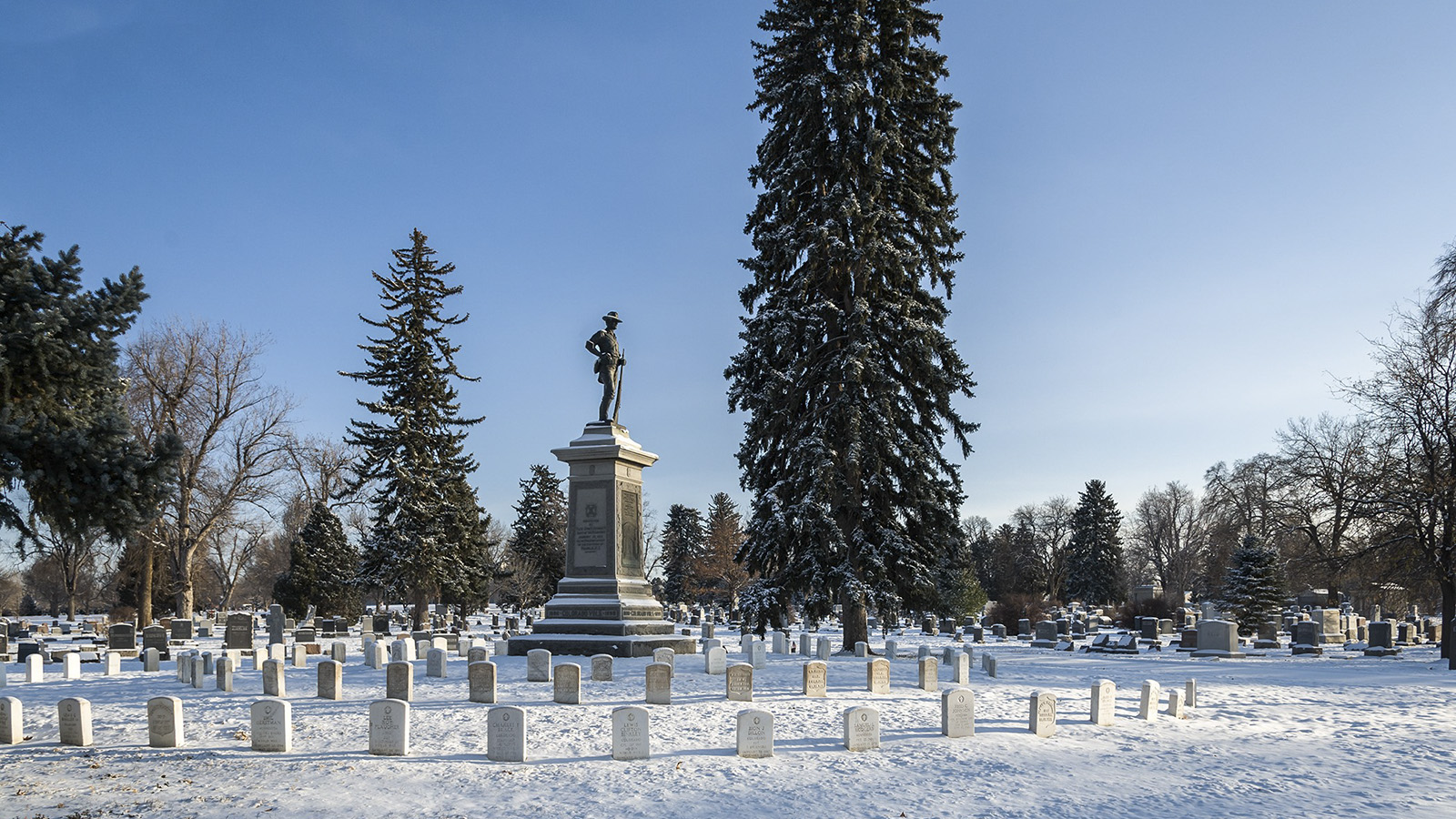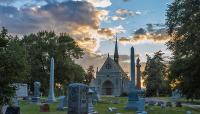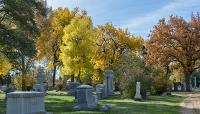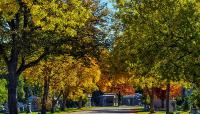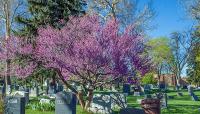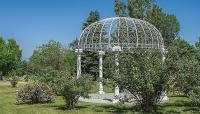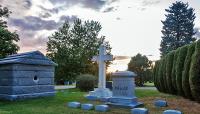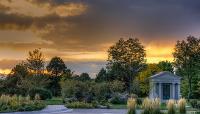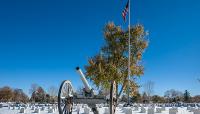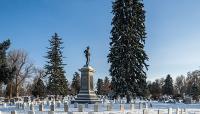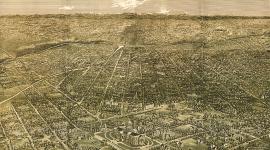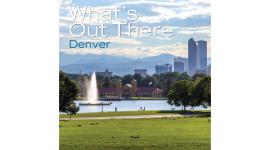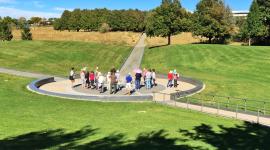Landscape Information
Located seven miles southeast of downtown Denver, this 385-acre cemetery and arboretum provided a park-like setting for passive recreation, memorialization, and burial. The Gate Lodge and the Little Ivy Chapel, both designed by architect Henry Ten Eyck Wendell, were in place when the cemetery opened in 1890. The grounds, originally 285 acres and designed by Reinhard Schuetze, were organized by an extensive and interlaced network of arcing carriage roads and pedestrian paths that capitalized on the site’s undulating topography to provide scenic vistas of the Rocky Mountains. The network of roads and paths created numerous burial blocks of varying shape, characterized by expanses of lawn and dense plantings of trees and shrubs. Schuetze established a greenhouse and nursery to propagate stock that would eventually be planted to create a diverse arboretum for the cemetery, which included oak, sycamore, maple, linden, elm, buckeye, Kentucky coffeetree, and several varieties of conifer. These trees were complemented with the planting of more than 60 varieties of roses. By 1893, the Fairmount Railroad was established to provide access to the grounds, encouraging leisure outings to the pastoral setting.
Over the years, additional crypts, mausolea, and chapels were constructed—though the historic setting has been retained. Tree-lined drives, diverse monuments and memorials, and antique roses draw visitors to the cemetery, which comprises more than 176,000 burials. Bordered on the south by the High Line Canal, Fairmount Cemetery provides habitat for wildlife including deer, foxes, coyote, and migratory birds.



